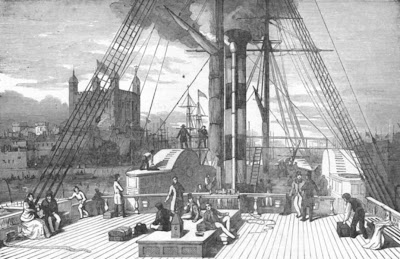January 13, 2012 - 1910: The first public radio broadcast takes place; a live performance of the opera Cavalleria rusticana is sent out over the airwaves from the Metropolitan Opera House in New York, New York.
I'm heading off to London tonight - it will be tomorrow I guess by the time this is posted - to take part in an English tradition that goes back 300 years - the Christmas pantomime. Anyone who has followed this blog will know that I don't mean the "walking against the wind" "trapped in an glass cage" stuff that you see in the summer from buskers who think they are Marcel Marceau. Pantomime or better yet Panto is that particular form of British entertainment that began when John Rich introduced the characters of Harlequin and company to the London theatre public in 1717.
What started off as "low opera" or intermezzi became a very specific form of full length entertainment that has evolved over the past three centuries, changed with the times and tastes, gone through bad periods and now seems to be on a new high. For many years here in Ottawa we were visited each Christmastide by pantos produced in England by Tudor Davies and brought lock, stock and Dame from England. Then Ross Petty took over and gave us amongst others a very memorable Aladdin. But now it seems the only Christmas entertainment we get is another version of The Nutcracker. So off I go to London to get my dose of panto for this year - and to see Dame Edna Everage in her debut as The Fairy of London in Dick Whittington. She is one of many "stars" appearing throughout the British Isles in some 120 odd pantos being produced this year.
Though there have always been "stars" in panto - John Rich, Joey Grimaldi, Dan Leno, Vesta Tilley, Herbert Campbell, Norman Wisdom, Julie Andrews, Cliff Richard (Cliff Richard???) - there was a period when audiences came not just for their favourites but for the processions, patriotic tableaux, transformation scenes and stage spectacle. During the glories days at Drury Lane it was not unknown for a stage designer to take a bow on opening night after his latest creation had been unveiled particularly if that designer was Clarkson Stanfield and he had just produced one of his remarkable dioramas or moving panoramas.
here) that have been in my various homes for the past 40 odd years - for The Queen Bee or Harlequin and the Fairy Hive, the Drury Lane Christmas panto in 1828-29, Stanfield created a moving picture that took the viewers on a sea voyage from "Spithead at Sunrise" through the Straits of Gibraltar and ending with a "Grand View of Constantinople".
When our memory glances back a few years and we compare in "the mind's eye", the dingy, filthy scenery which was exhibited here - trees, like inverted mops, of a brick-dust hue - buildings generally at war with perspective - water as opaque as the surrounding rocks, and clouds not a bit more transparent - when we compare these things with what we now see, the alteration strikes us as nearly miraculous. This is mainly owing to Mr. Stanfield. To the effective execution of the duties belonging to the scenic department, he brought every necessary qualification - a knowledge of light and shade which enabled him to give to his scenes great transparency and a ready and judicious taste for composition, whether landscape, architecture or coast, but more especially for the last . . . His present scene is fully equal - in some parts superior - to any thing he has heretofore done ... The view of Lord Nelson's ship the Victory, is the most gorgeous specimen of naval architectural painting that we ever saw ... The view of Gibraltar, bristling with fortifications is uncommonly fine. It exhibits an extent of space ... and a grandeur of elevation which seem to say "I am invulnerable".
To show how little some things have changed the panto I saw in Wimbledon, Dick Whittington, included a moving panorama that took us with the eponymous hero under the sea. It wasn't painted canvas but projected and in line with modern trends and technology we donned Dame Edna glasses to witness the wonders of the deep in 3D. Who says panto isn't modern and up to date????
07 September - 1911: Guillaume Apollinaire is arrested and put in jail on suspicion of stealing the Mona Lisa from the Louvre museum.








No comments:
Post a Comment